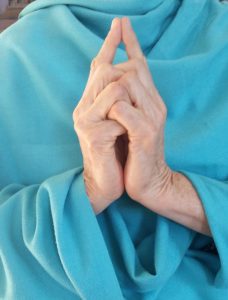 In 2008, Zhineng Qigong teacher Jane Jin introduced me to a system of unique qigong breathing exercises. I was eagerly encouraged by fellow qigong practitioners to give them a try. Although I felt I had plenty to explore and practice in the qigong world, I reluctantly decided to give them a chance. Immediately, I began incorporating them into my daily Zhineng Qigong practice. I was truly surprised at the beneficial changes that quickly occurred. My other qigong practices soon reached new levels; I felt more awake, calm, insightful and stronger than ever before.
In 2008, Zhineng Qigong teacher Jane Jin introduced me to a system of unique qigong breathing exercises. I was eagerly encouraged by fellow qigong practitioners to give them a try. Although I felt I had plenty to explore and practice in the qigong world, I reluctantly decided to give them a chance. Immediately, I began incorporating them into my daily Zhineng Qigong practice. I was truly surprised at the beneficial changes that quickly occurred. My other qigong practices soon reached new levels; I felt more awake, calm, insightful and stronger than ever before.
Jane explained that this unique breathing system was developed and offered to the public by Master Zhankui Liu, a long-time student of Dr. Pang Ming (the founder of Zhineng Qigong). She described how the breathing exercises combine knowledge of modern science and medicine, traditional Chinese medicine, qigong and yoga practice. They initiate both self-healing and fitness, as well as an advanced meditation practice. With regular practice the breathing exercises quickly activate energy, restore vitality to the sick, maintain health and increase longevity.
Activation of the body’s microcirculatory system, energy centers and organs through qigong breathing exercises provide profound, discernable beneficial effects. This activation permeates our being in a multitude of ways. The respiratory, digestive, circulatory, immune and urinary systems are enhanced. The purpose of these breathing methods is to awaken and conserve vital energy in “energy banks” within the body, which will fuel all our activities.
Theoretical Base
Master Liu developed these breathing exercises for modern times based on Zhineng Qigong’s theoretical foundations. They are simple practices appropriate for everyone. They were developed to assist all people who want improved health and spiritual development.
The theoretical base for the breathing exercises is the Hunyuan Rhymed Formula as introduced by Dr. Pang. The Rhymed Formula basically and generally reads as:
“Hunyuan qi is invisible and formless while also being visible and substantial. Yin yang become one. Qi creates all life through the natural rhythm of open/close, gather/condense, disperse/dissolve, transform/transmute.”
Breathing System
This qigong breathing system consists of: an opening meditation, three distinct breathing methods, head massages and a closing meditation.
The preparatory or opening meditation is to open mind and heart. Through this meditation we become centered, grounded and more connected with nature. This alone promotes overall wellness by reducing stress and making space for increased wellness and happiness.
The distinct breathing exercises are designed to activate and achieve resonance of the three main dantians in the body. They each employ specific hand positions (mudra). The use of a mudra with palms placed together greatly enhances the effectiveness of the practice as circulating energy between the palms balances yin and yang.
The first and third methods use alternate breathing and are designed to activate the middle and lower dantians. The first method awakens the micro-circulatory system of the body thereby promoting qi penetration throughout entire body. It stimulates and balances lung and brain activities and enhances all functions of the body.
The second method circulates energy between the brain and the lower abdomen. It supports a connection with the three main energy centers: upper, middle and lower dantian.
The third method massages the five major organs through the up and down movement of the diaphragm. It awakens qi in organs and enhances qi in lower dantian. All systems of the body are also improved because of the movement of the diaphragm. When it moves up, the diaphragm massages the heart and lungs. When it moves down, it activates the liver, pancreas, digestive system, kidneys, etc.
Head Massage
The head massage method is done after each breathing method to activate all meridians in the head and boost qi and blood circulation to balance qi through the whole body. It also activates the nerves of the scalp; the key acu-points on the head and promotes qi to nourish the brain’s nerve cells. Practiced with breathing, it is highly beneficial, but it can also be practiced on it’s own.
The breathing exercises are followed by a closing meditation “yang qi” (conserving qi) to gather, condense and store qi in lower dantian. The more time spent doing yang qi the faster your dantian will fill with abundant qi, which will help to enhance your wellness and balance emotions.
The breathing exercises are still my main practice. Many students tell me the same is true for them and that they have been the most beneficial of all the qigong exercises. If you would like to learn more about this breathing system and can’t come to a class or workshop, please contact us as we can provide written and video instructions for you.
Abundant qi to you,
Martha







Hi Martha,
These Qigong breathing exercises sound wonderful! I am interested in learning more. Will you be teaching them at the 12/5/15 workshop in Elfin Forest?
Looking forward to seeing you soon!
OK, I’m inspired to once again start my breathing practice.
Hope all is unfolding well for you and Leonard in your wonderful Hawaiian home.
Have been enjoying Mary’s classes. I know she will be with you next week.
Looking forward to having both of you back later this month.
I picked a bag of persimmons and will take the to my yoga studio……….they will go in a heartbeat! Thanks.
Love, Sandy